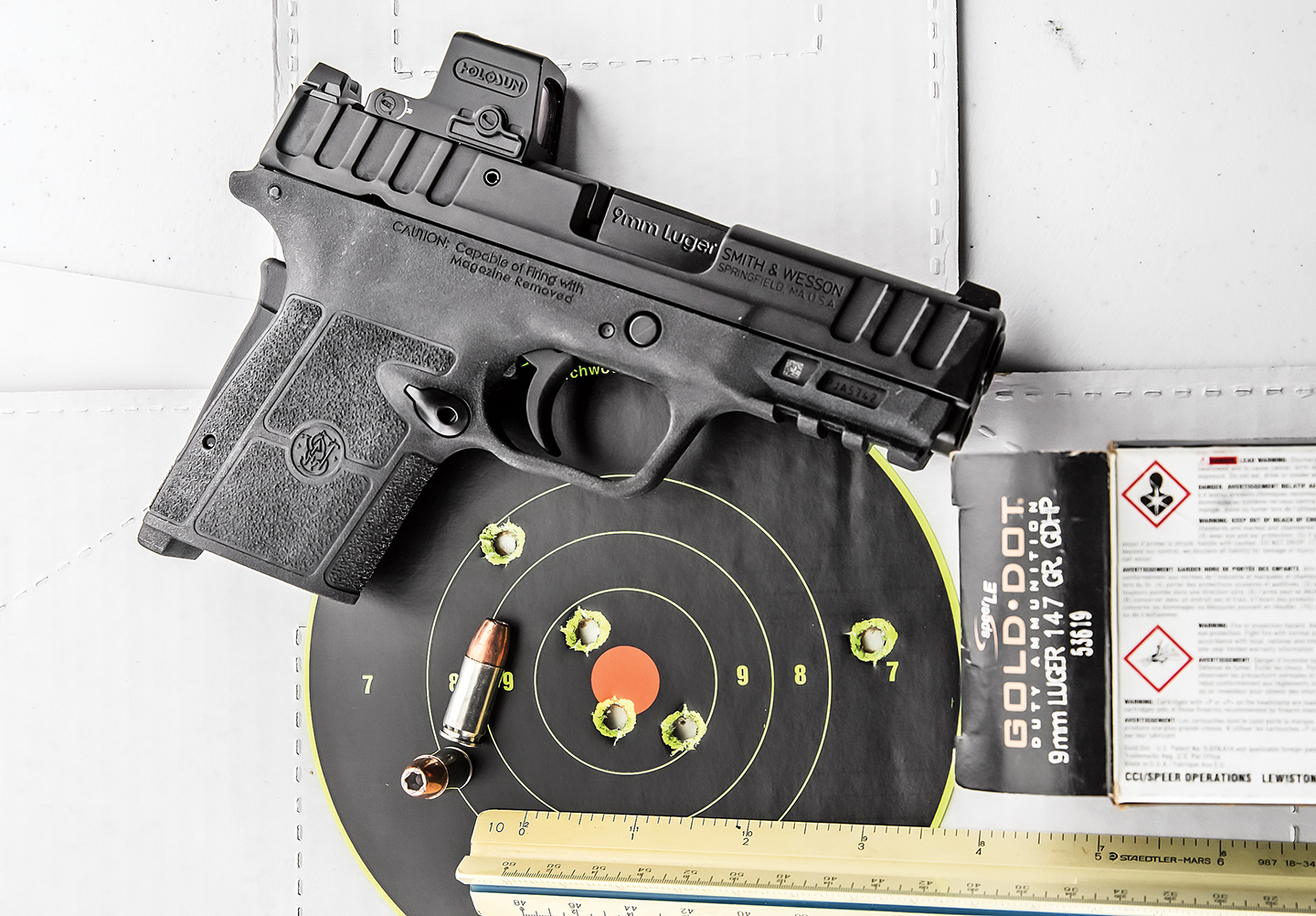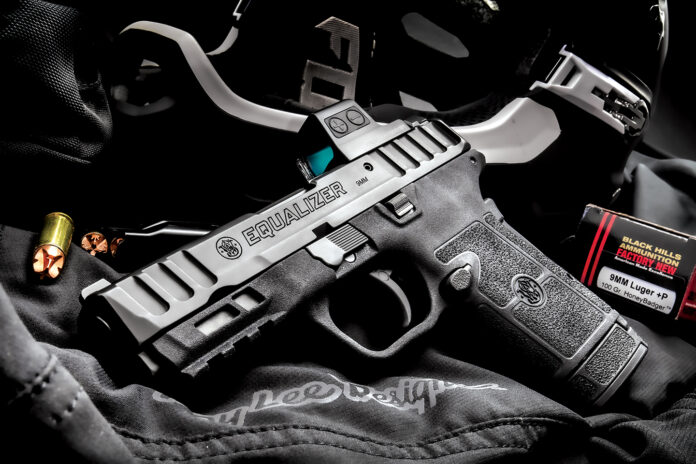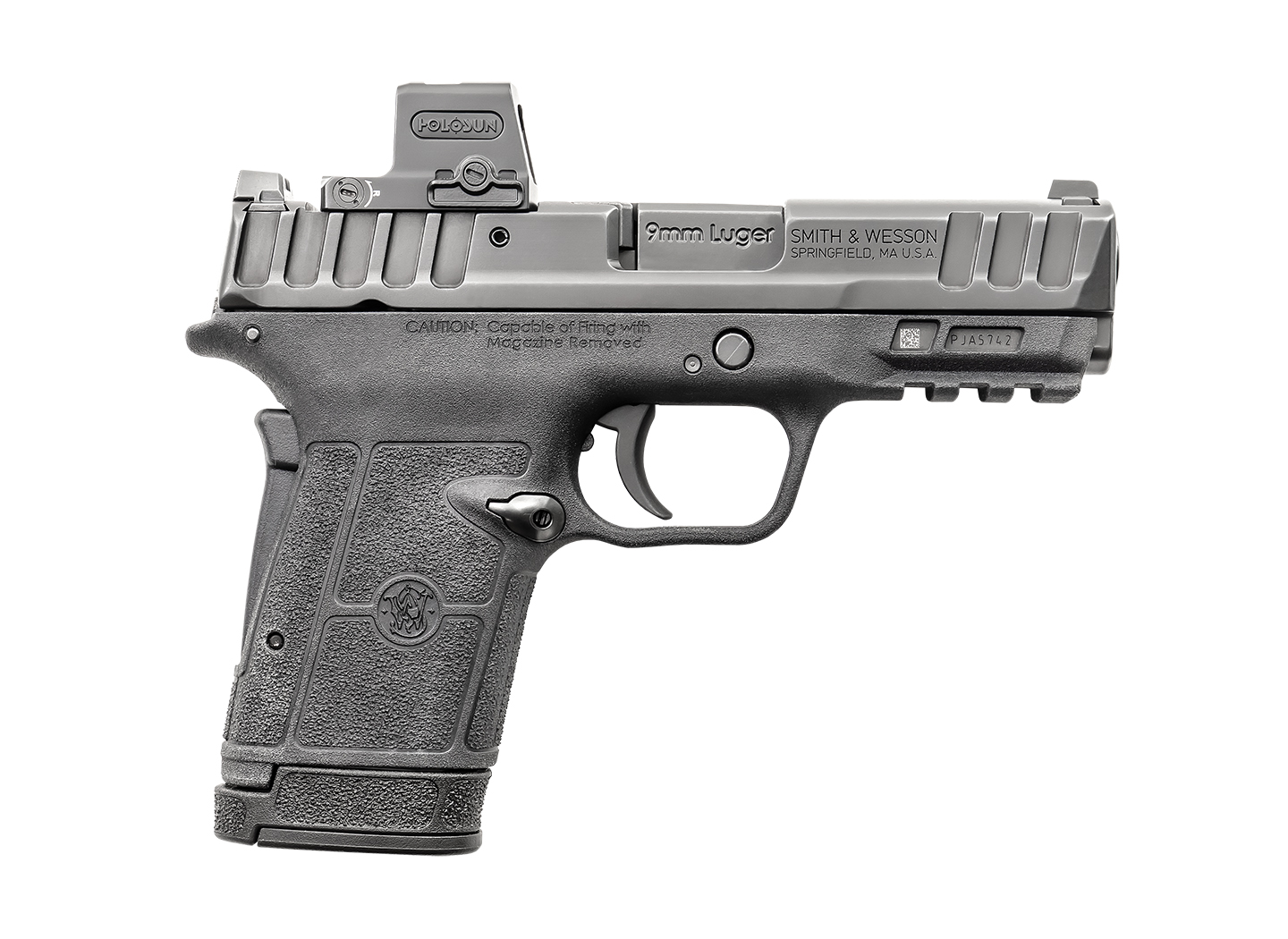THE EQUALIZER!
By Massad Ayoob
Photos by Ben Battles and Gail Pepin
The result of Smith & Wesson combining all of its best compact-pistol features
Smith & Wesson’s latest “equalizer” is, appropriately enough, named the Equalizer. Take the enlarged magazine capacity of the Shield Plus, mate it with the light-to-rack slide and grip safety of the E-Z series, make it optics-ready with a light rail, and we have the topic of this article.
Compact rather than “micro” in size, the Equalizer fit remarkably well in one of my Kydex Glock 19 holsters, though neither I nor S&W nor On Target recommend carrying a pistol in a holster not specifically made for it. The test gun came from On Target‘s offices with a Holosun EPS Carry green dot optic already sighted in and co-witnessed with the three-dot iron sights (thanks, folks!) and from Smith & Wesson with three magazines of differing length and capacity – a ten-rounder, a thirteen-, and a fifteen – and a MagLULA. Though it has the generic “look” of a striker-fired pistol, this polymer-frame handgun, in fact, fires with an internal hammer. In keeping with the easy-to-rack feature, the rear of the slide is slightly widened for a better grasp by the support hand. In fact, on page 25, the owner’s manual depicts the slide being retracted with thumb and forefinger. On my calibrated scale, the Equalizer with empty ten-round mag and the Holosun mounted weighed 23.2 ounces.
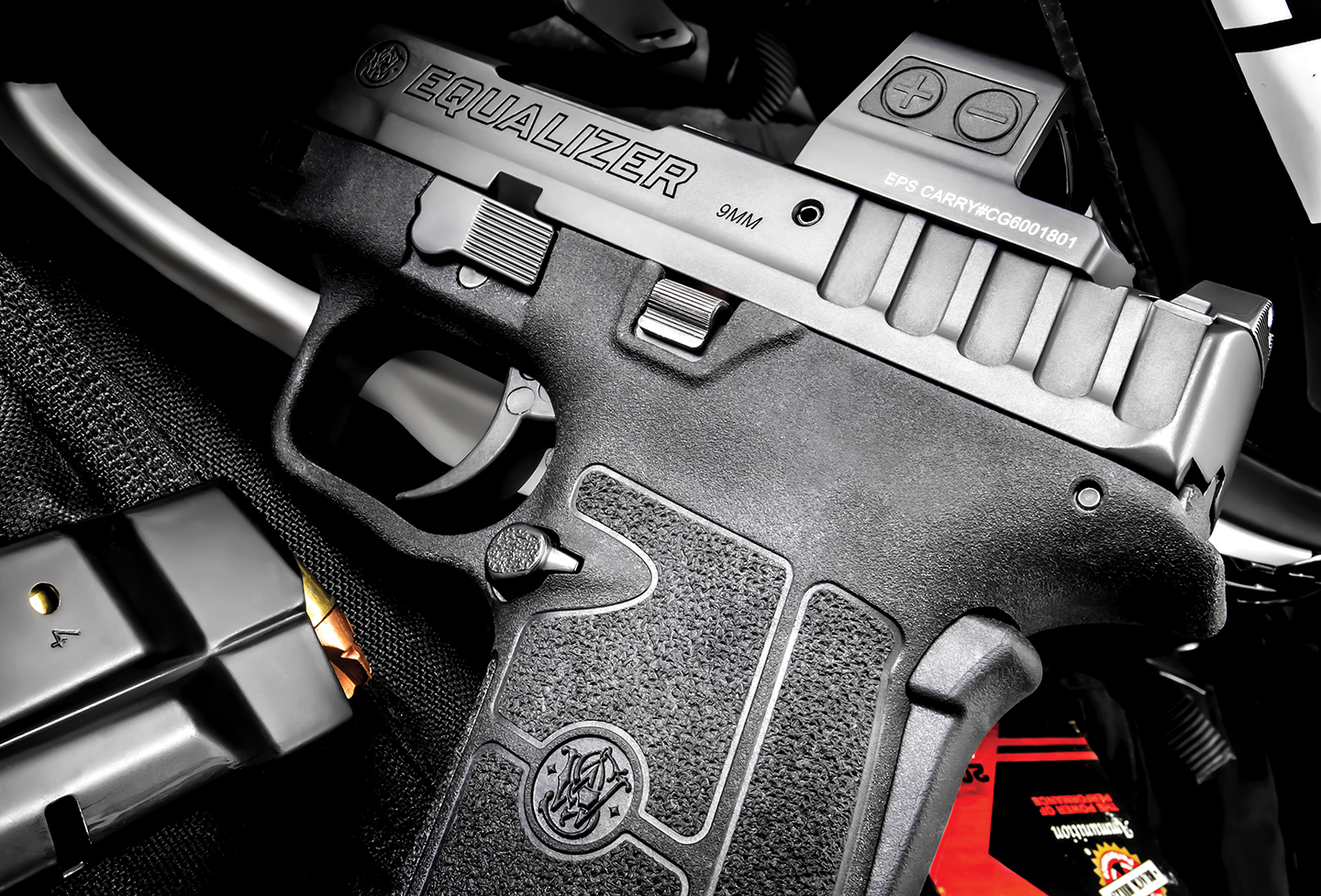
About the Name
I’ve seen a bunch of folks on the internet saying this gun will get you in trouble because of its avenger-sounding name. Oh, please…I’m the “liability guy” who warned you about things like hair triggers, issues with handloads in court, and “Rambo-sounding” gun names. I’ve seen two cases and was personally involved in one where the “other side” made a big deal out of the self-defender using a Colt Cobra. But “Equalizer?” Since at least the early 19th Century, all firearms have been called “equalizers” to allow weaker victims a fighting chance against violent criminals greater in size or numbers. Remember “God made men, but Colonel Colt made them equal”? The purpose of the defensive firearm is to be a force multiplier for the forces of good. “Equalizer” is a term that is totally defensible, in my opinion.
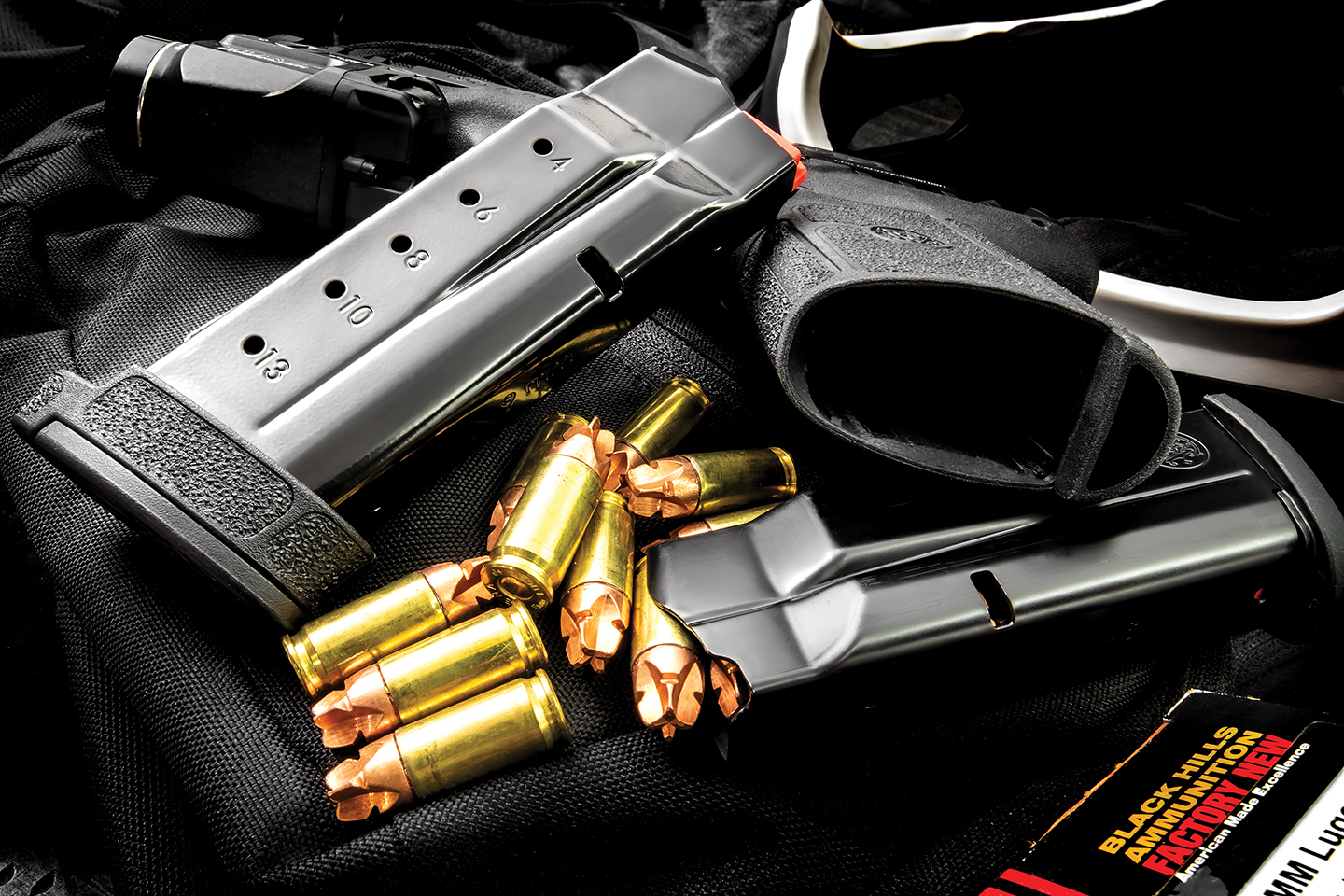
Trigger
The trigger pull is “the heart of the beast” for good shooting. S&W promises the Equalizer’s pull will be “crisp.” It’s subjective, but I would change that to “smooth.” It has a short, even “roll” to the break that I found quite controllable. On the Lyman digital trigger pull gauge from Brownell’s, pull weight from the toe (bottom tip) of the trigger averaged 4.95 pounds, and from the center, where the trigger finger actually rests for most of us, 5.81 pounds. Pull weight was extremely consistent from shot to shot.
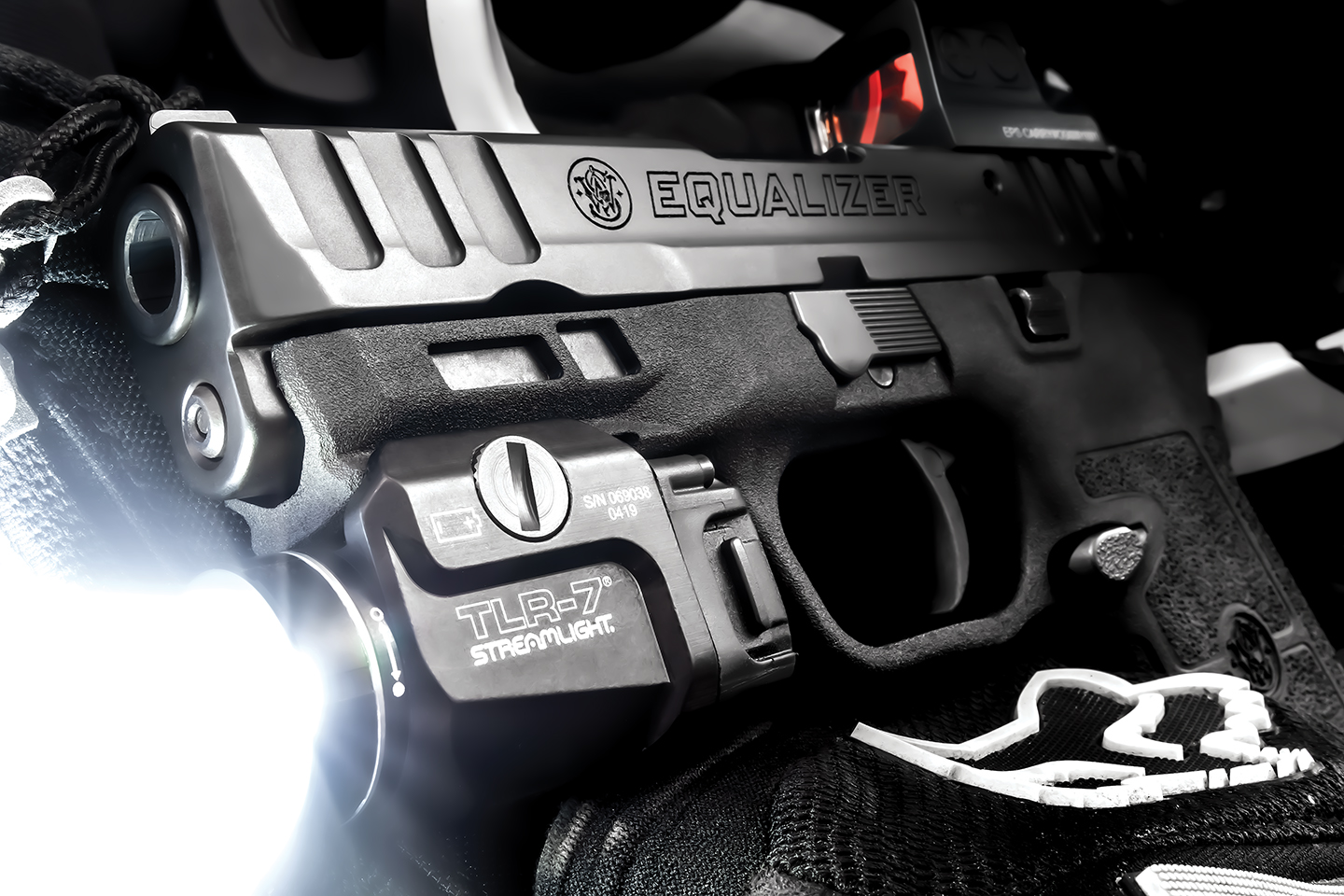
On the Firing Line
From Caldwell Matrix rest on a concrete bench at 25 yards, I tested accuracy with the three most popular 9mm Luger bullet weights. In 115 grain, the popular Blazer Brass full metal jacket load proved, um, “not to the pistol’s taste.” The chosen 124-grain load, Black Hills’ famously accurate 124-grain XTP jacketed hollow point, gave a “that’s more like it!” group of 4.2″ for all five shots, with the best three in 1.92″. The Equalizer hit its stride, though, with the popular 147-grain subsonic: with that version of the Speer Gold Dot bonded jacketed hollow point, the five-shot group measured 3.35″, with four of them in 2.20″ and the best three in 1.20″. The decades have taught me that the “best three” measurement from hand-held rest with no called flyers will generally equal what all five would have done from a machine rest, and is an easier test for most of our readers to duplicate with their own samples of the same guns and loads.
In reloading, the short magazine ejected cleanly, but the longer ones hung up, with the rear of the “spacer” catching on the heel of the shooter’s hand. This is neither a Smith thing nor an Equalizer thing, but a “short butt with extended, sleeved magazine” thing. The magazine release button, by the way, is reversible.
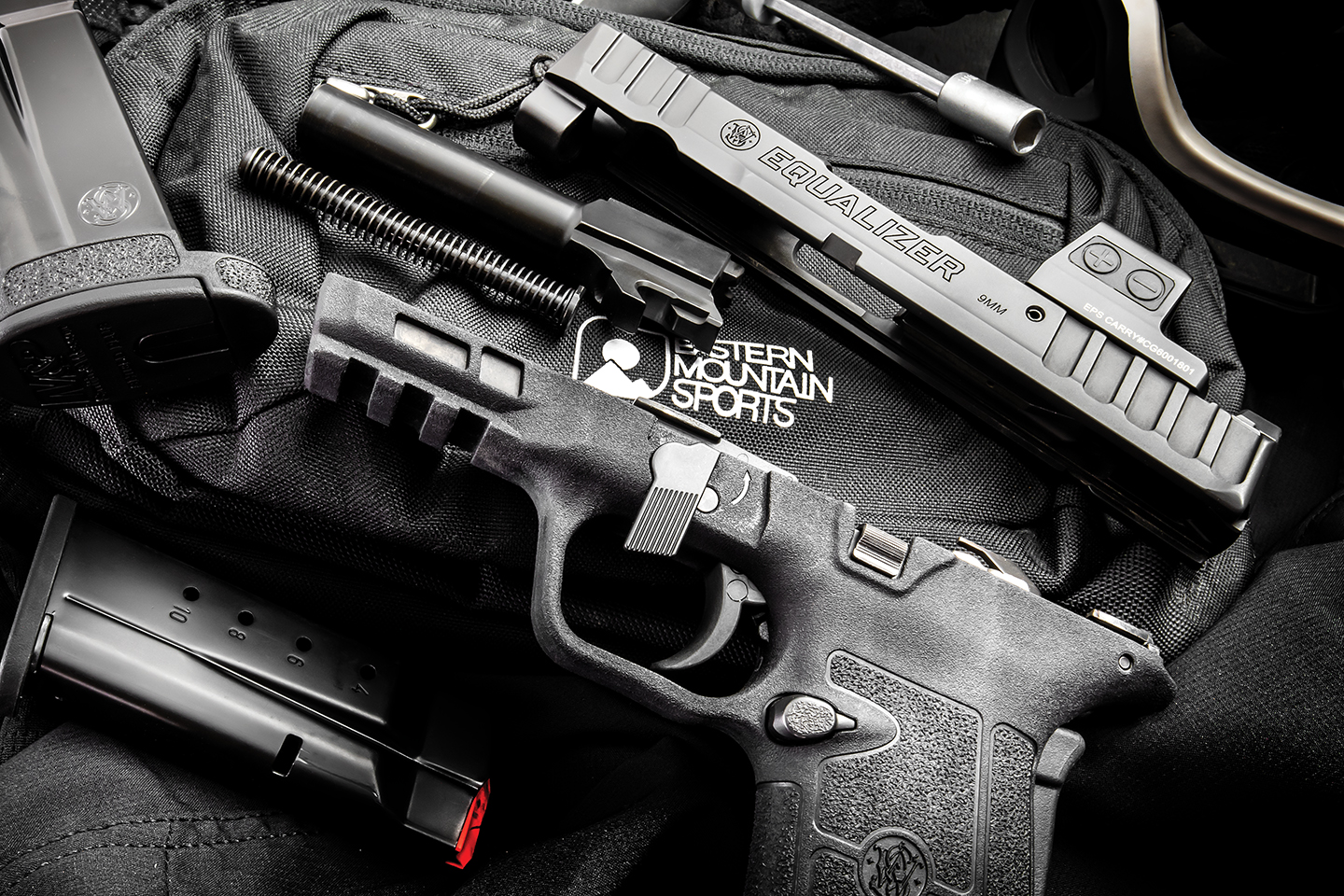
That easy-running slide? It works. From a petite lady of “Social Security” age to an old guy with arthritic hands (me), the slide of the Equalizer proved easy to rack.
As to “shootability,” I ran it through a 60-shot “off-duty gun” qualification from four to fifteen yards that included five reloads and everything under time, with elements of shooting from cover and one hand only with either hand. The green dot of the Holosun returned quickly to target thanks to the 9mm S&W’s soft recoil, and I ended up with a 100% score, with half or more of the bullets through one ragged hole. It’s hard to ask for better than that. Reliability? We experienced no malfunctions of any kind.
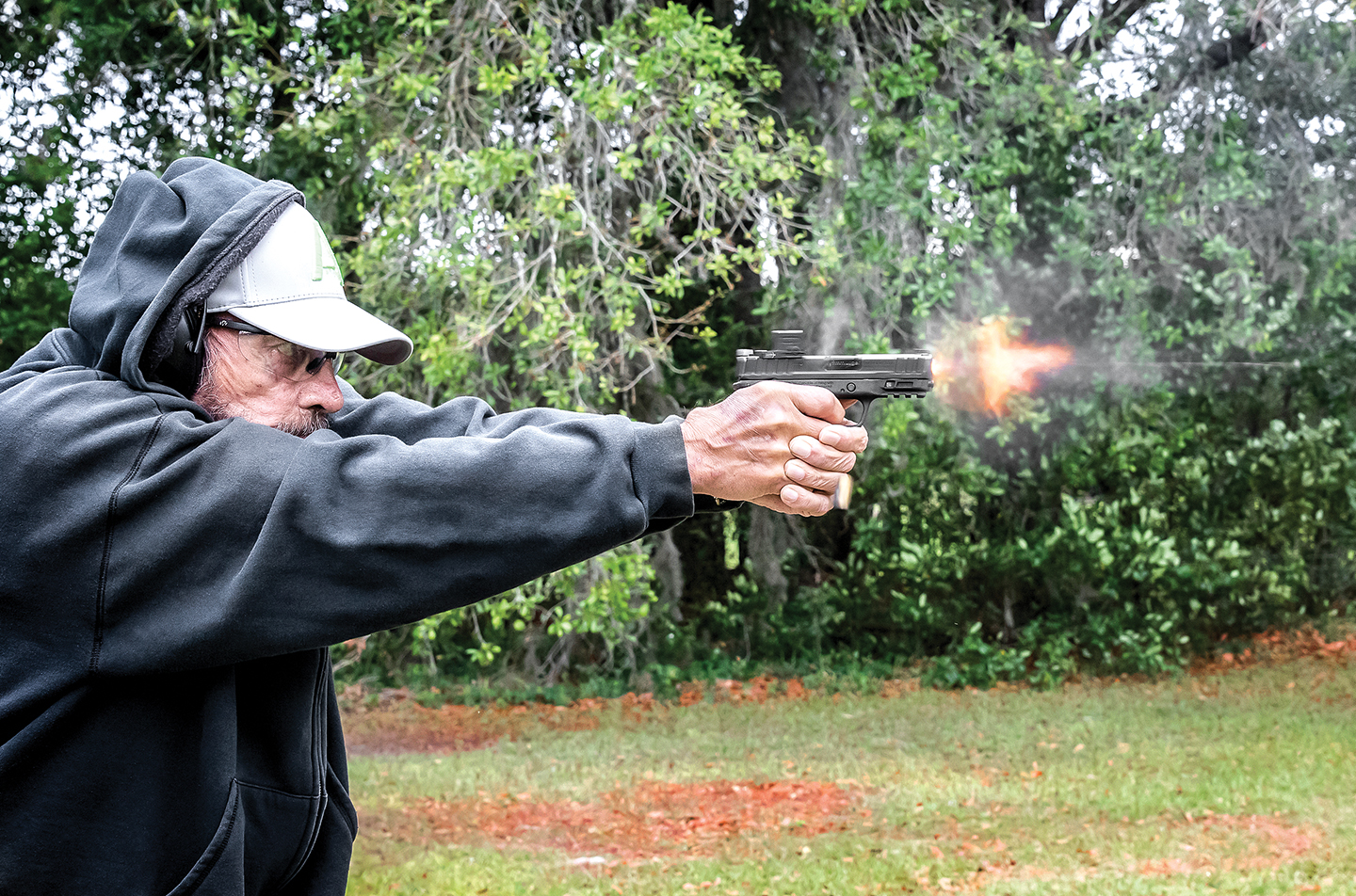
Perks and Quirks
I found two pleasant and important surprises in this pistol. One is “stand-off capability”: thrusting the muzzle straight into a target, the pistol fired without its barrel-slide assembly going out of battery and preventing a shot. At belly-to-belly distance with your would-be murderer, this can be a life-or-death advantage. The Equalizer shares this feature with my favorite S&W Micro 9mm, the CSX.
Another “perk” balances a “quirk.” Our test gun is a cocked and unlocked pistol, which gives shooters of my generation the creeps. “Easy to shoot intentionally” can equal “easy to shoot unintentionally” if something – fold of clothing, too-narrow holster safety strap, or finger – gets into the trigger guard when holstering. Like its E-Z predecessors, the Equalizer has a grip safety, which must be depressed by the web of the hand in a firing grasp for the pistol to fire. WITH ANY SUCH PISTOL, IF YOU SIMPLY HOLD YOUR THUMB ON THE BACK OF THE SLIDE WHEN YOU HOLSTER, THE GRIP SAFETY IS “ON SAFE” AND THE PISTOL CAN’T FIRE IF SOMETHING PULLS ITS TRIGGER!
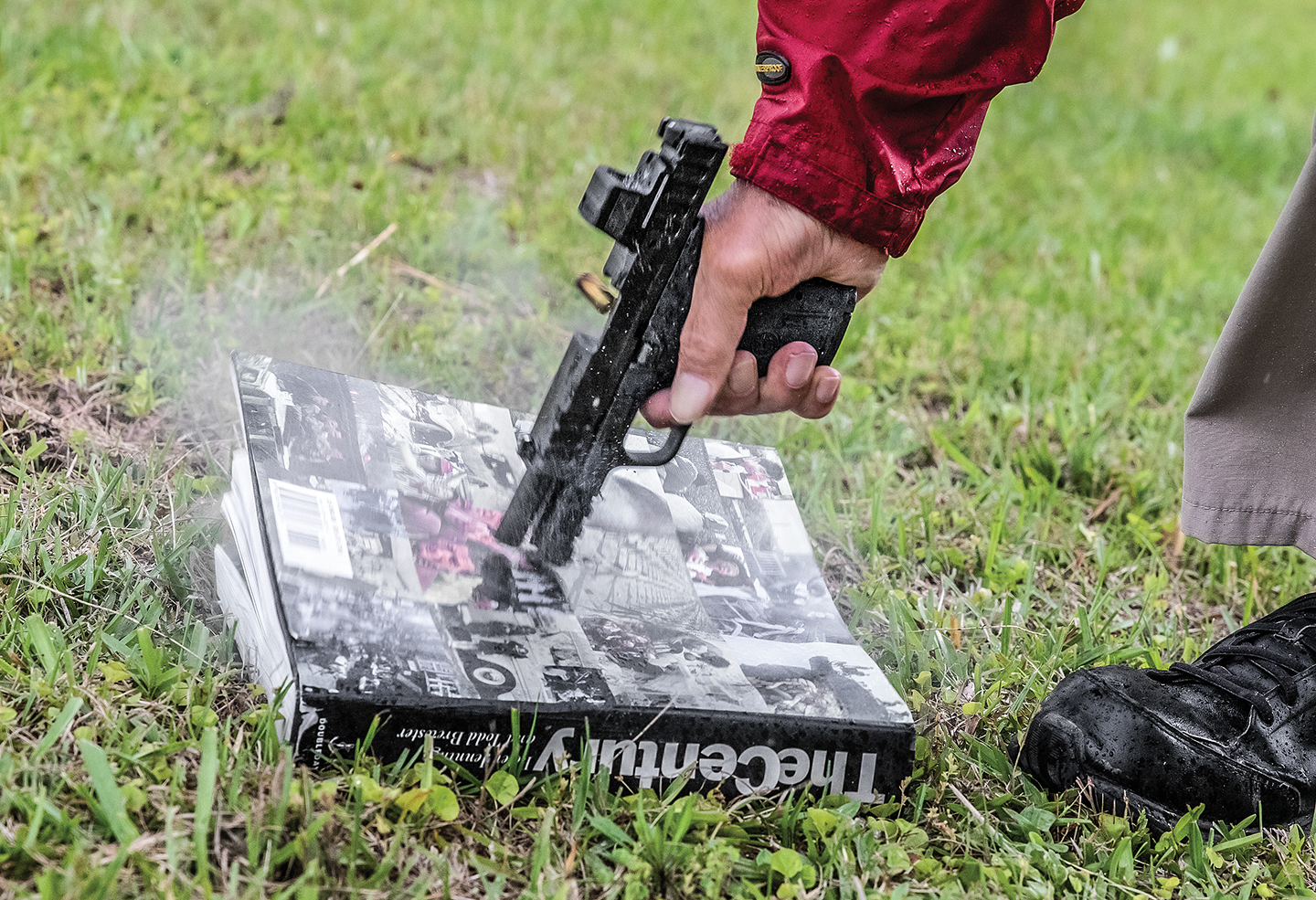
This is one more safety net…but an imperfect one. On most any “squeeze and shoot” pistol – the venerable 1911, the Springfield XD series, the unique HK P7 squeeze-cocker – if the finger is held back and the lever then depressed, as in a normal firing grasp, the pistol will fire!
With On Target’s test Equalizer, if the trigger was depressed and the grip safety then 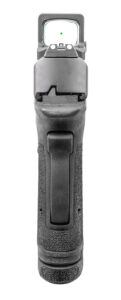 pressed in, the pistol did NOT fire. Simply letting the trigger come forward once drawn, assuming the grip safety was still depressed, allowed the pistol to fire intentionally. The only problem I saw with the grip safety was that the currently trendy “vertical thumb” firing grip pulled the web of the hand too far back to allow the pistol to fire.
pressed in, the pistol did NOT fire. Simply letting the trigger come forward once drawn, assuming the grip safety was still depressed, allowed the pistol to fire intentionally. The only problem I saw with the grip safety was that the currently trendy “vertical thumb” firing grip pulled the web of the hand too far back to allow the pistol to fire.
The ten-round mag was easy to load full up by hand. The thirteen-rounder required the UpLULA for the thirteenth cartridge. The fifteen-round magazine took thirteen by hand, a fourteenth with the UpLULA, and flat refused to accept the last round even with mechanical assist. Hopefully, the springs will ease up with use.
The Equalizer is available in NTS (No Thumb Safety) like our test gun or the TS variation with a reasonably ergonomic frame-mounted thumb safety. I’d recommend the latter on a cocked pistol like this one with a round in the chamber: one more safety net if you holster with a firing grasp and something catches the trigger, and it historically buys life-saving time if an attacker gains control of your pistol.
Bottom line? With an MSRP of $599, the S&W Equalizer 9mm is gonna sell well. See it at your nearest dealer, or for more information, contact Smith & Wesson; Tel.: (800) 331-0852; Web: www.smith-wesson.com.
